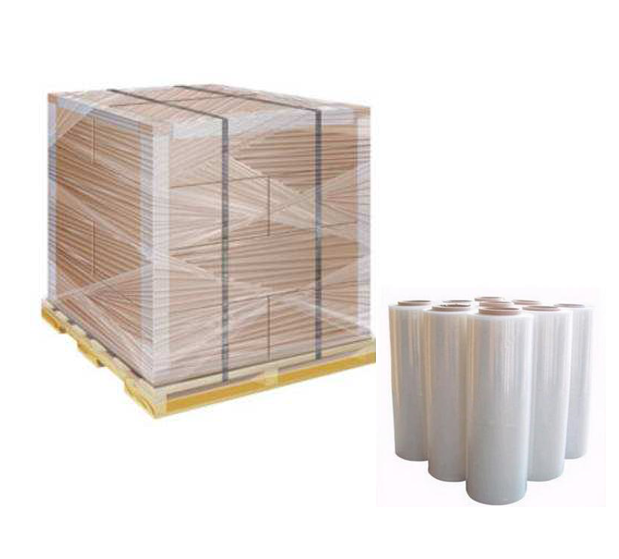In our daily life, industrial stretch film has a wide range of uses, such as logistics packaging, product protection, and waterproof and moisture-proof items. Are you very curious about how the industrial stretch film is produced? What are the raw materials for producing industrial stretch film? Today we will answer this question.
First of all, the raw material of the industrial stretch film is low-density linear polyethylene, referred to as LLDPE, with a relative density of 0.910-0.925. Traditional low-density polyethylene uses polymer-grade ethylene with oxygen or peroxide as the initiator. It is made by free radical polymerization under low density polyethylene. Therefore, low-density polyethylene is also called high-pressure polyethylene. Low-density polyethylene is a waxy white resin with a non-linear structure. The molecular weight is generally 100,000~500,000. Therefore, compared with medium density and high density polyethylene, it has lower crystallinity and softening point, better flexibility, elongation, electrical insulation, transparency, and higher impact resistance. This guarantees excellent industrial stretch film elongation and puncture resistance.
There are two kinds of production processes for stretched films, one is the casting production process and the other is the cooling and setting production process. Let’s talk about the difference between the two specifically:
1. Casting production process
The production of industrial stretch film mostly uses the casting method mainly because the stretched film produced by the casting method has uniform thickness and high transparency, which can fully meet the requirements of high-magnification pre-stretching dies. The choice of materials for single-layer and double-layer casting is not as extensive as three-layers, and the finished formulation is relatively high, so it is better to choose a three-layer structure for stretched films. With the expansion of industrial stretch film application fields, the amount of stretch film will increase greatly, and its market potential is immeasurable. Due to the long and narrow flow channel and fast flow rate in the casting process, the temperature range of the melt is generally controlled at 250℃~280℃, the temperature of the casting cooling roll is controlled at 20℃~30℃, and the winding tension should be low. Less than 10kg to facilitate the migration of the adhesive and reduce the internal stress of the finished film.
2. Cooling and shaping production process
The industrial stretch film is blow molded by a process of rapid cooling and shaping. This quenching production process is designed based on the principle of polymer orientation. When the PVC powder is completely plasticized and extruded into embryonic film, the polymer is carried out in both vertical and horizontal directions between the glass transition temperature and the viscous fluid temperature. Forced stretching makes the molecular chains of the polymer oriented along the stretching direction. At this time, the film is rapidly cooled to “freeze” the strain generated by the stretching orientation.
At present, the most popular in the market is the casting production process, and our stretch film also adopts this production method. At present, the market has responded very well and the quality has been recognized by customers.
If you have any needs, please contact us. Hanpak has been specialized in producing industrial stretch film for 20 years.

